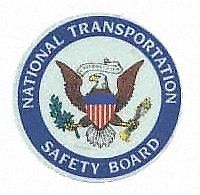Mon, Dec 21, 2009
Blame It On The Weatherman? Suit Claims WX-Related
Injuries Were Preventable
 Donna Dacko and Inga Isakson have
filed a legal claim against both the FAA and Weather Service
International (WSI) over injuries sustained when Alaska Airlines
Flight 464 hit severe turbulence on the way into ONT midmorning on
December 25, 2007. According to their attorney, Alisa
Brodkowitz, the claim precedes the inevitable lawsuit and was
filed to avoid a statute of limitations issue, on Dec 25.
Donna Dacko and Inga Isakson have
filed a legal claim against both the FAA and Weather Service
International (WSI) over injuries sustained when Alaska Airlines
Flight 464 hit severe turbulence on the way into ONT midmorning on
December 25, 2007. According to their attorney, Alisa
Brodkowitz, the claim precedes the inevitable lawsuit and was
filed to avoid a statute of limitations issue, on Dec 25.
Dacko and Isakson were up doing final compliance checks during
the incident. Isakson suffered a head injury with loss of
consciousness and concussion while Dacko sustained multiple
fractures to her ankle. No other crewmembers or passengers were
injured.
The claim lists WSI as negligent in accurately reporting the
weather to the airline. The National Weather Service (NWS)
issued a SIGMET for occasional severe turbulence, but that
information was allegedly not included in the report provided to
the flight crew. CFR 121.601 requires the dispatcher to provide all
weather reports and forecasts to the PIC.

The claim against the FAA holds ATC responsible for not passing
on the SIGMET to the inbound flight. The NTSB report shows that
some aircraft did get the advisory, but flight 4646 "apparently...
was not one of them."
Lawyer and former Alaska Airlines pilot John Nance was quoted by
the Seattle Times as saying that he has never heard of a case
similar to this. "For a suit like this to be successful they are
going to have to show the defendants, the FAA in particular, had
evidence of turbulence and had a duty to transmit it to the crew
and didn't do that," said Nance. "That's a steep mountain to
climb."

The NTSB report on the accident lists the probable cause of the
incident to be: "The lack of turbulence forecasts available to the
flight crew, which resulted in the flight attendants not being
seated when the flight encountered severe terrain-induced
turbulence. Contributing to the accident were the terrain-induced
turbulence, the failure of the company that provided the flight's
weather briefing to forecast severe turbulence, and the failure of
the dispatcher to provide the National Weather Service severe
turbulence forecast to the flight."
The claim shows the flight attendants are seeking to have WSI
pay for medical expenses, pain and suffering, emotional distress,
and lost wages.
More News
Secondary Radar/Radar Beacon (ATCRBS) A radar system in which the object to be detected is fitted with cooperative equipment in the form of a radio receiver/transmitter (transponde>[...]
Aero Linx: Australian Society of Air Safety Investigators (ASASI) The Australian Society of Air Safety Investigators (ASASI) was formed in 1978 after an inaugural meeting held in M>[...]
Make Sure You NEVER Miss A New Story From Aero-News Network Do you ever feel like you never see posts from a certain person or page on Facebook or Instagram? Here’s how you c>[...]
From 2023 (YouTube Edition): Barking up the Right Tree Australian-born, the Aeropup is a remarkably robust, fully-customizable, go-anywhere, two-seat, STOL/LSA aircraft. The machin>[...]
Also: New Amelia Search, B737 Flap Falls Off, SUN ‘n FUN Unveiling, F-16 Record Captain Sully Sullenberger, the pilot who saved 155 people by safely landing an A320 in the Hu>[...]
 ANN's Daily Aero-Term (07.12.25): Secondary Radar/Radar Beacon (ATCRBS)
ANN's Daily Aero-Term (07.12.25): Secondary Radar/Radar Beacon (ATCRBS) ANN's Daily Aero-Linx (07.12.25)
ANN's Daily Aero-Linx (07.12.25) ANN FAQ: Turn On Post Notifications
ANN FAQ: Turn On Post Notifications Classic Aero-TV: Of the Aeropup and its Pedigree
Classic Aero-TV: Of the Aeropup and its Pedigree Airborne 07.07.25: Sully v Bedford, RAF Vandalism, Discovery Moving?
Airborne 07.07.25: Sully v Bedford, RAF Vandalism, Discovery Moving?





